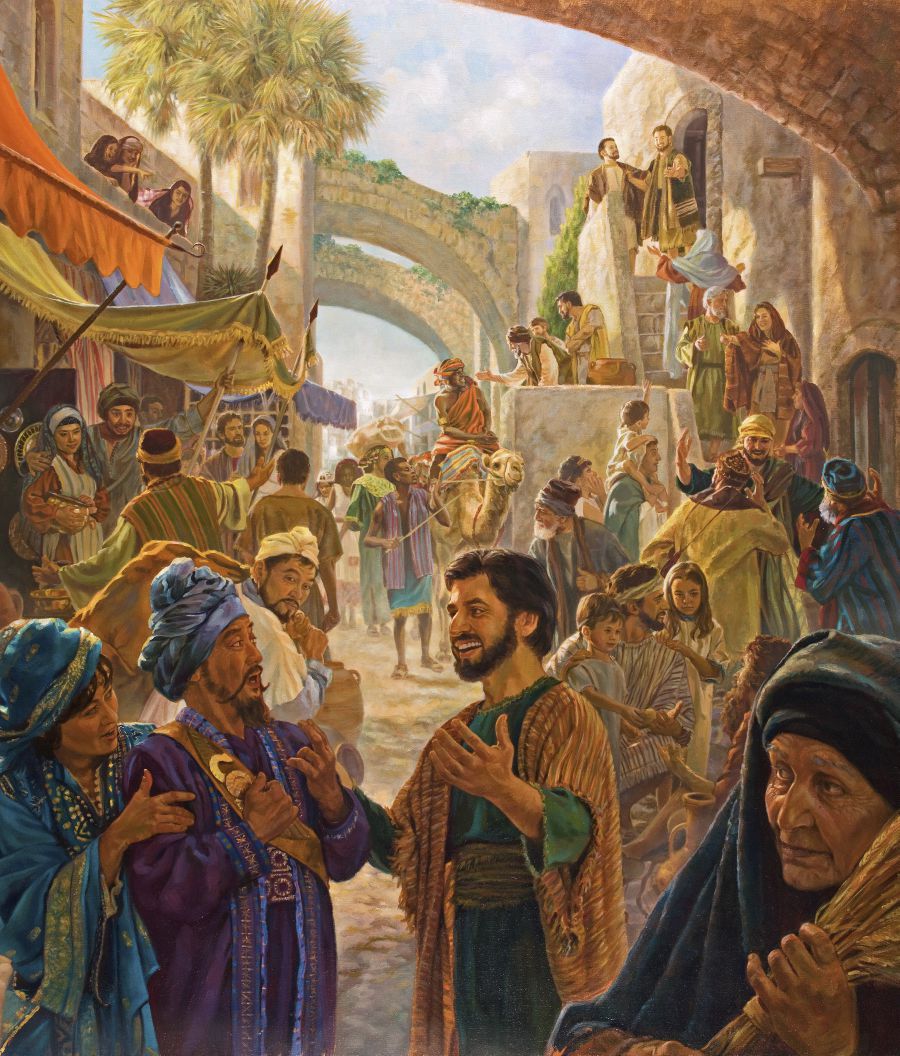Araraạr dị emite mem mọ ookuom bọ bumatuạn phọ uwaloor iigbia phọ ḍio aPentikọst phọ
1. Irọl ghan ika mem dị role Eyaạl aPentikọst phọ?
1Bạl onhụ English

2. Ighẹn araraạr dị eḍigh ḍiigu kụ imite Pentikọst 33 C.E.?
2 Bạl onhụ English
3. (a) Uḍighi ika kụ aPentikọst 33 C.E. aḍighi bọ mem dị emhạn maạr mem dị rokaạph ilọ iphirigba igey iiseeny? (b) Ika kụ edị aPita asighẹ aḍighinhom eniin ekpo “isabị omạr phọ” mem mọ odị angọ bọ oghaạph phọ odị?
3 Bạl onhụ English
“Ookpomoghan Eniin Esi” (Iiḍighi 2:1-4)
4. Ika kụ idị ookpomhoghan aKristẹn phọ rodon rokiọm ghisigh oḍighi ookpomhoghan phọ omiteom bọ 33 C.E.?
4 Bạl onhụ English
5. Siphẹ oḅẹl okuron asiạ phọ, eeghe asuọ kụ arọl ghan esi ooḍikuan r’ookpomhoghan aKristẹn phọ, kụ eeghe asuọ kụ odi rodon?
5 Bạl onhụ English
6, 7. Ika kụ idị ookpomhoghan aKristẹn phọ rodon roḍighi oḍighi phọ aZizọs angọ bọ mọ ogbeelhom iiḅi iinhaghạn phọ oḅenhị we oomo areelhe?
6 Bạl onhụ English
7 Bạl onhụ English
8. Yira romoọgh ghan eeghe olhoghonhaạn aḍighaạgh dị eego esi ookpomhoghan aKristẹn phọ?
8 Bạl onhụ English
“Oye Ye Anaghạn Ni . . . Onhụ Odị” (Iiḍighi 2:5-13)

“We hear them speaking in our languages about the magnificent things of God.”—Acts 2:11
9, 10. Ika kụ idị abuniin awe moḍeenhaan mọ bidị rowạ ni oghaạph iiḅi iinhaghạn phọ oḅenhị aani awe dị roḅạ ghan onhọn onhụ?
9 Bạl onhụ English
10 Bạl onhụ English
11. Eeghe kụ edị yira kotue ni oḍighi pidị yira ogbeelhom dom Omhạr phọ oḅenhị aani we dị roḅạ ghan inhọn arunhụ?
11 Bạl onhụ English
‘APita Aḅetenhu’ (Iiḍighi 2:14-37)
12. (a) Oyil phọ Juẹl aghaạph eeghe ilọ iiḍaạny phọ emite bọ Pentikọst 33 C.E.? (b) Uḍighi ika kụ abumatuạn phọ aZizọs ogon ghan bọ dị imiịn phọ aJuẹl kemunhughan?
12 Bạl onhụ English
13, 14. APita aḍighi eeghe oteẹny arokpom abuphẹ ronaghạn bọ, kụ ika kụ idị yira kotuughaạny nyodị?
13 Bạl onhụ English
14 Bạl onhụ English
“Obọ [Oḍiinye] Torobọ Onyọ Anyina Muụm” (Iiḍighi 2:38-47)
15. (a) APita aḅạ eeghe ikpo-onhụ, kụ awe phọ umhegheron ika? (b) Uḍighi ika kụ asimuunịr abuphẹ onhaghạn bọ iiḅi iinhaghạn phọ pạ Pentikọst osi bọ ni omhanhanhaạm oḍiiny amuụm ḍio ḍio phọ?
15 Bạl onhụ English
16. Ika kụ idị aKristẹn oḅẹl okuron asiạ phọ oḍeenhaan eegharạ osighẹ aloor ophighironhọm ekiạ?
16 Bạl onhụ English
17. Ighẹn aradạ kụ edị oye kagbariọn kụ agbi osi omhanhanhaạm oḍiiny amuụm?
17 Bạl onhụ English
18. Eghẹn eepoogh kụ edị abumatuạn aKraist dị moḍiiny muụm omhoọgh?
18 Bạl onhụ English